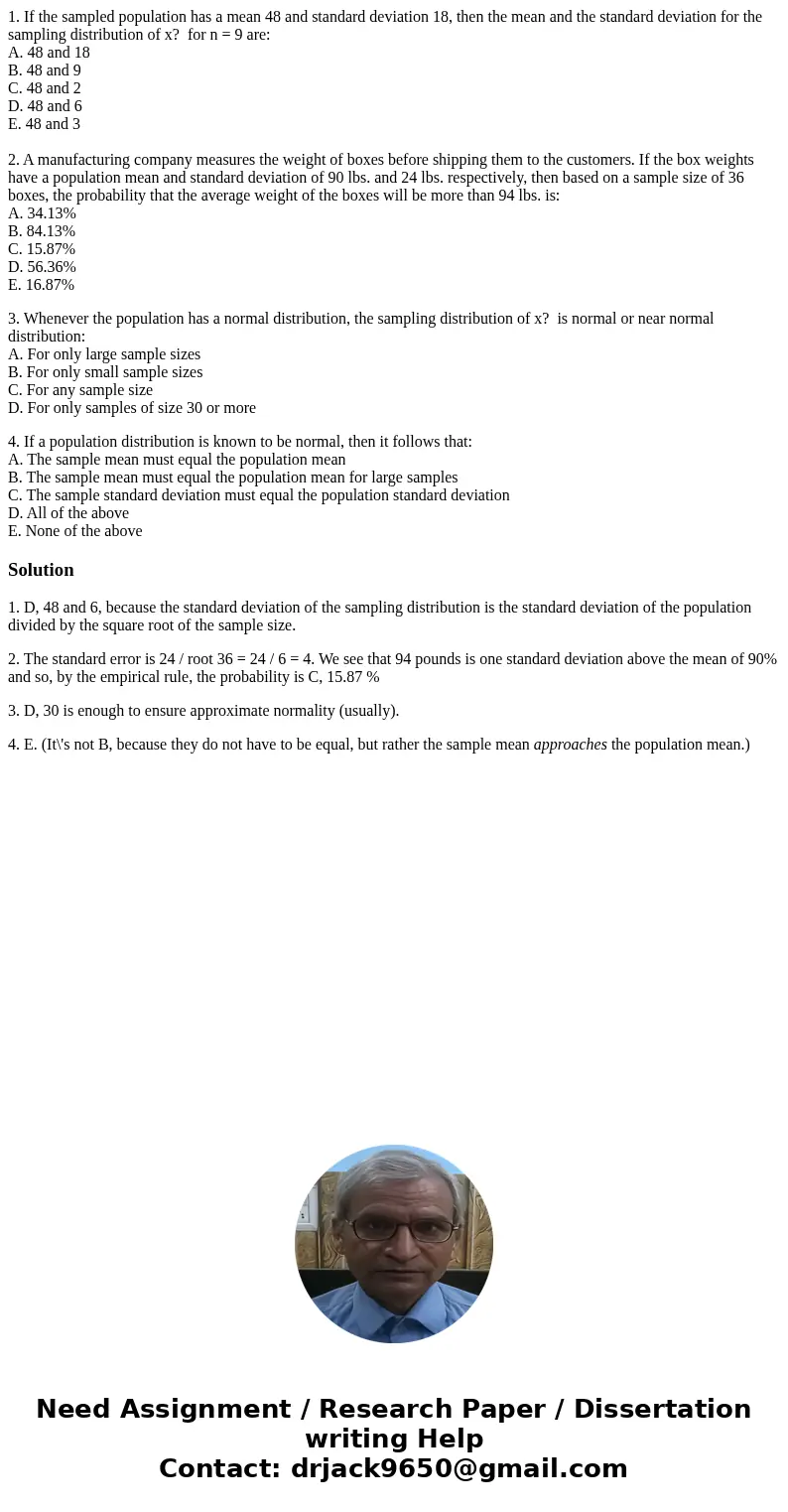1 If the sampled population has a mean 48 and standard devia
1. If the sampled population has a mean 48 and standard deviation 18, then the mean and the standard deviation for the sampling distribution of x? for n = 9 are:
A. 48 and 18
B. 48 and 9
C. 48 and 2
D. 48 and 6
E. 48 and 3
2. A manufacturing company measures the weight of boxes before shipping them to the customers. If the box weights have a population mean and standard deviation of 90 lbs. and 24 lbs. respectively, then based on a sample size of 36 boxes, the probability that the average weight of the boxes will be more than 94 lbs. is:
A. 34.13%
B. 84.13%
C. 15.87%
D. 56.36%
E. 16.87%
3. Whenever the population has a normal distribution, the sampling distribution of x? is normal or near normal distribution:
A. For only large sample sizes
B. For only small sample sizes
C. For any sample size
D. For only samples of size 30 or more
4. If a population distribution is known to be normal, then it follows that:
A. The sample mean must equal the population mean
B. The sample mean must equal the population mean for large samples
C. The sample standard deviation must equal the population standard deviation
D. All of the above
E. None of the above
Solution
1. D, 48 and 6, because the standard deviation of the sampling distribution is the standard deviation of the population divided by the square root of the sample size.
2. The standard error is 24 / root 36 = 24 / 6 = 4. We see that 94 pounds is one standard deviation above the mean of 90% and so, by the empirical rule, the probability is C, 15.87 %
3. D, 30 is enough to ensure approximate normality (usually).
4. E. (It\'s not B, because they do not have to be equal, but rather the sample mean approaches the population mean.)

 Homework Sourse
Homework Sourse